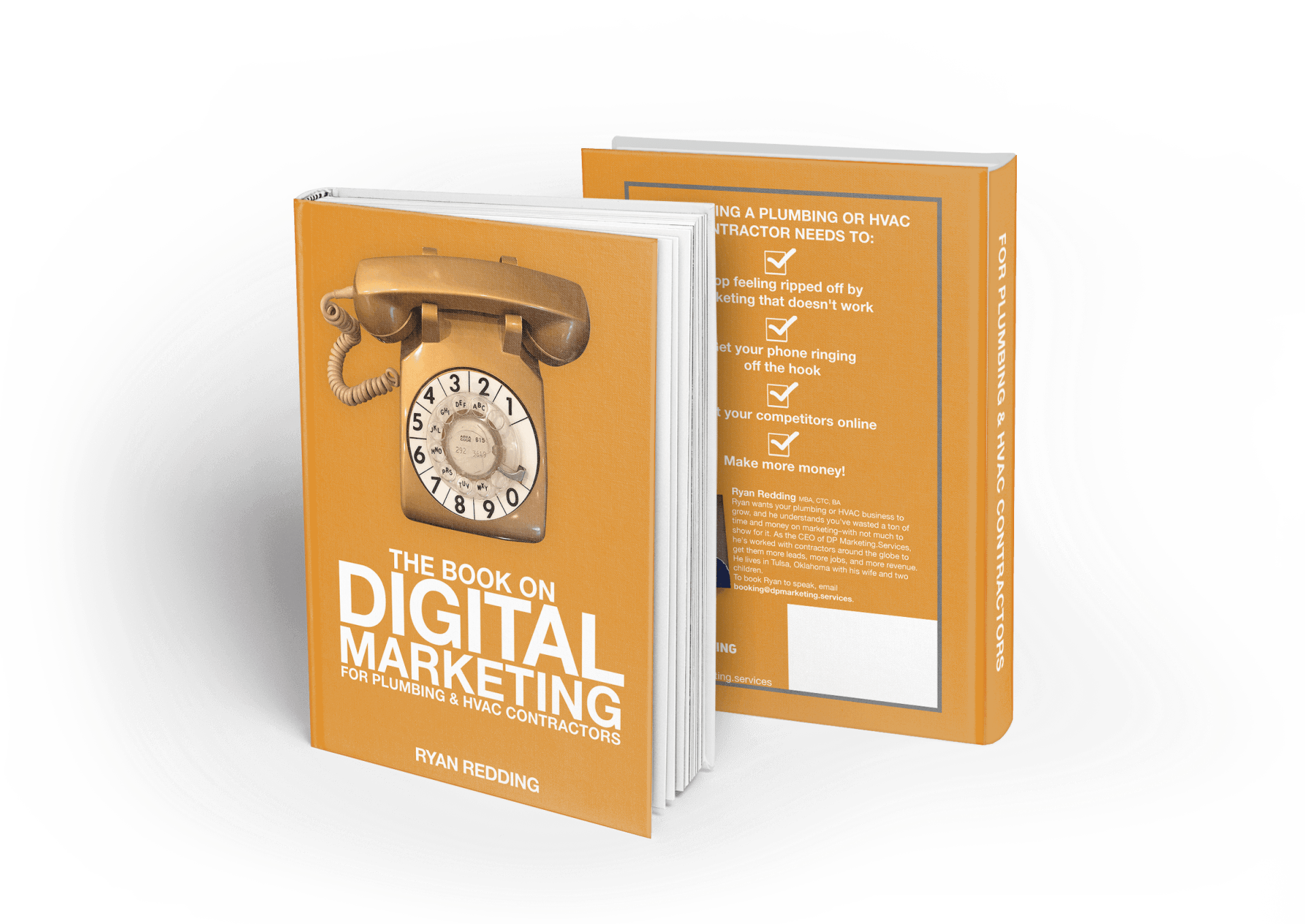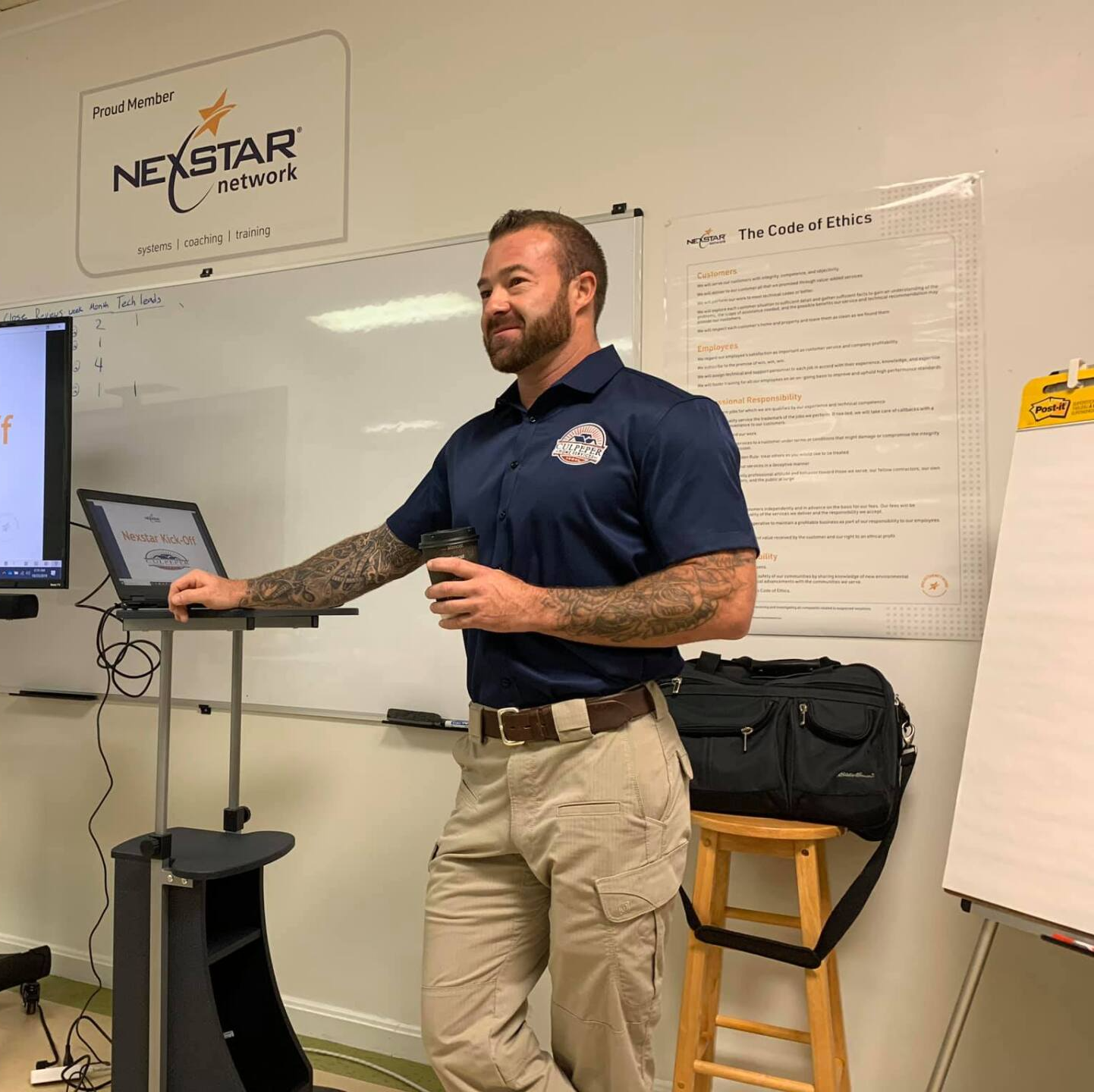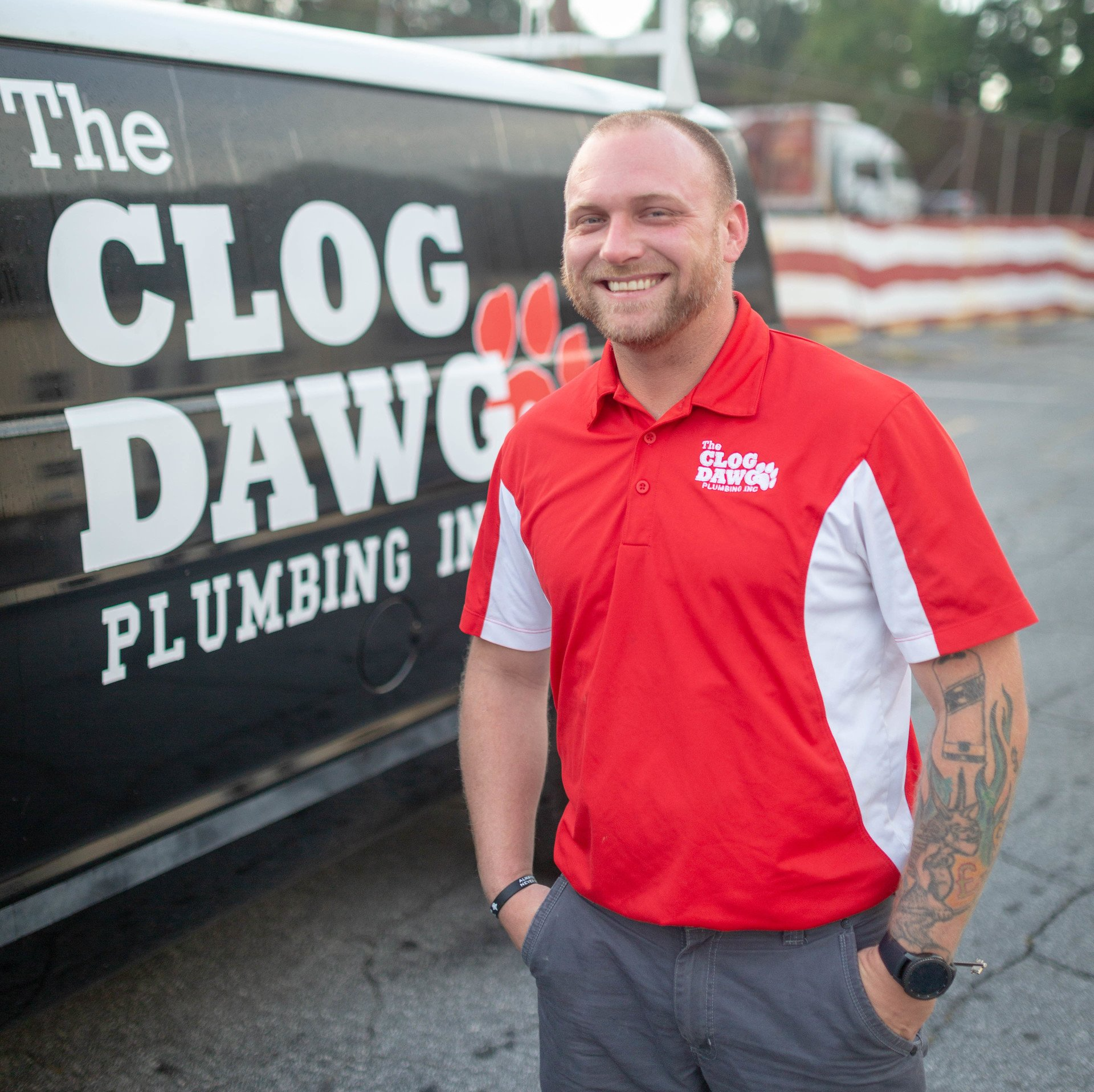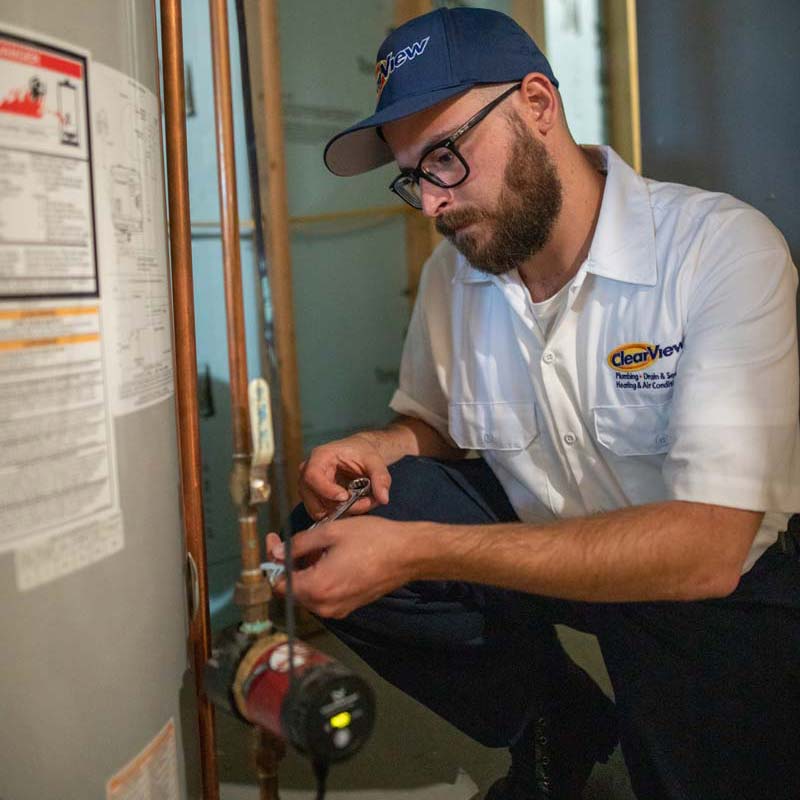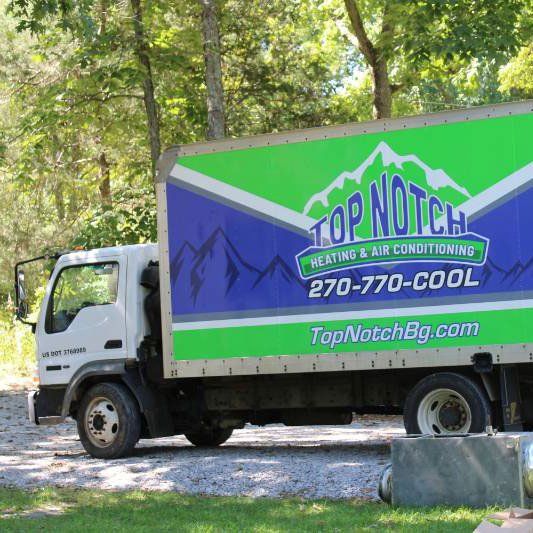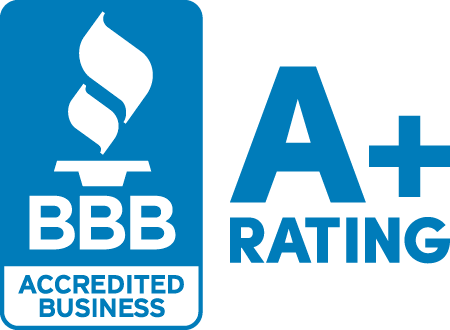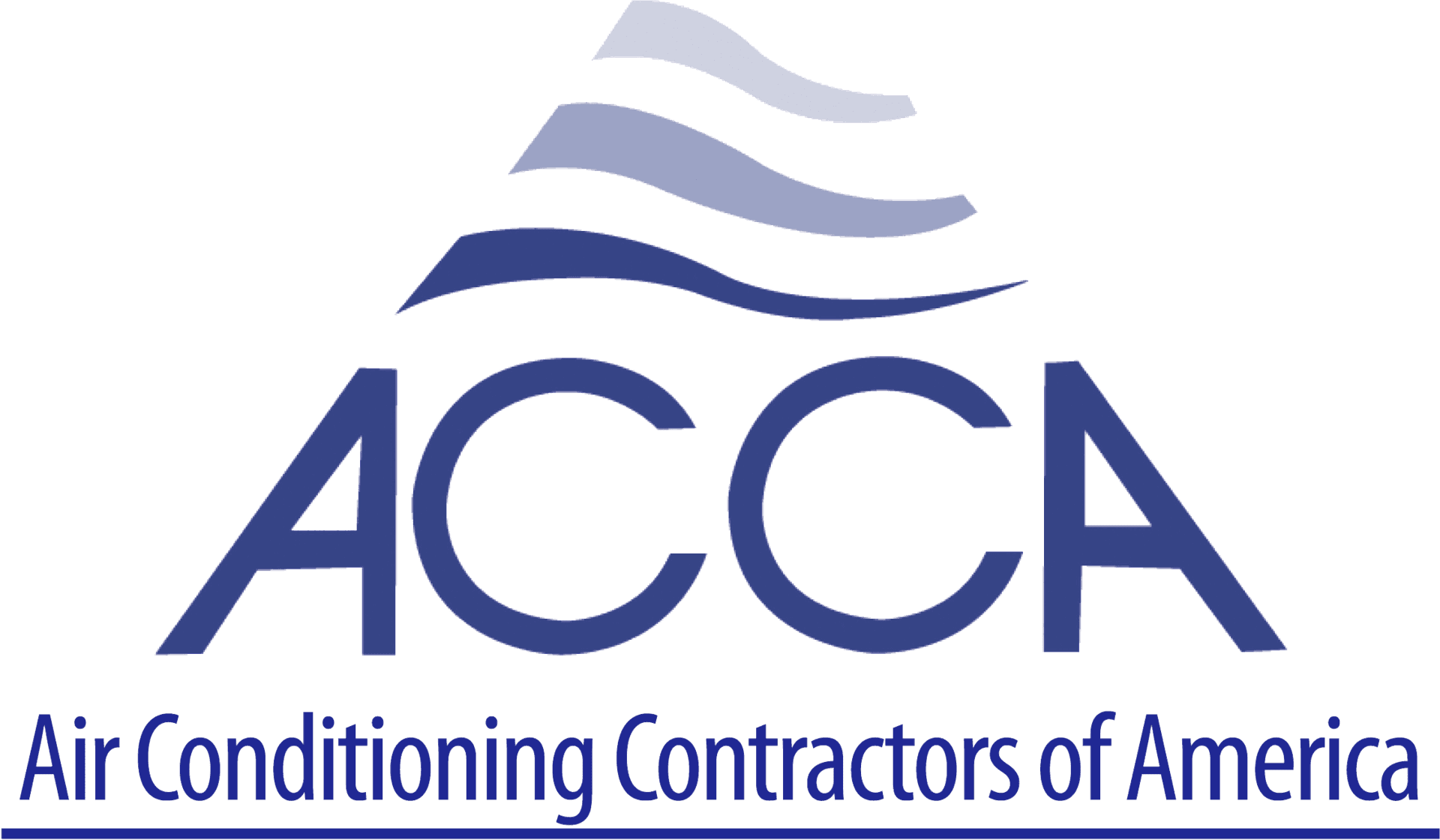Marketing Attribution for Home Services: Moving Beyond the Click

Marketing attribution is a critical yet often misunderstood component of marketing strategy, especially in the home service industries such as plumbing, HVAC, electrical, roofing, and garage door services. With the increasing complexity of the customer journey, relying on surface-level metrics like clicks and impressions is no longer sufficient. Home service businesses must understand the complete path customers take before making a purchase decision.
To help make this a bit more obvious, imagine three different people searching for “air conditioner” online:
- Person 1 is looking for a portable air conditioner for their Honda.
- Person 2 wants to rent an air conditioner for an upcoming event.
- Person 3 needs repair services for their American Standard air conditioner.
To a search engine like Google, each of these clicks appears identical. However, only one represents a valuable lead for an HVAC company. Without the proper marketing attribution model to distinguish between these different intents, businesses may end up wasting substantial marketing dollars on irrelevant clicks.
In this article, we’ll dive deep into the importance of moving beyond traditional click-based attribution models. We’ll explore advanced marketing attribution strategies that provide a clearer picture of your ROI and discuss tools that help connect the dots between your marketing efforts and actual revenue. By the end, you’ll have a comprehensive understanding of how to implement a robust marketing attribution model that aligns with your business goals and drives profitability.
Also, let's get one thing out of the way: this article is a bit on the nerdy side for advanced operators. Depending on the revenue scale and complexity of your shop, some of these ideas might be a bit out of grasp for now. (And that's OK!)
Let's jump in.
What is Marketing Attribution?
Understanding Marketing Attribution
Marketing attribution is the process of identifying which marketing efforts contribute to a conversion or sale. It’s about understanding the customer journey and pinpointing the exact touchpoints that led a customer to choose your service. For home service businesses, effective marketing attribution is crucial because it allows you to see not just which ads are getting clicks but which are driving meaningful actions like calls, bookings, and revenue.
The Complexity of the Modern Customer Journey
Today’s customer journey is rarely a straightforward path. With the proliferation of digital touchpoints—social media, search engines, email, display ads, and more—customers are interacting with brands across multiple channels before making a purchase decision.
Consider the following scenario:
- Initial Awareness: A homeowner sees a display ad for your plumbing services on a local news website. They click on the ad but don’t take any immediate action.
- Research Phase: A few days later, the same homeowner searches for "best plumbers near me" on Google and clicks on your PPC ad. They read some reviews on your website but leave without making a call.
- Consideration: The homeowner then sees a retargeting ad for your services on Facebook, reminding them of their initial interest. They click on the ad and browse your services again.
- Decision: Finally, after receiving an email from your company offering a discount, the homeowner decides to call and book a service.
In this example, several touchpoints contributed to the final conversion. Each interaction played a role in moving the customer closer to a decision. '
A last-click attribution model would only credit the email for the conversion, ignoring the earlier touchpoints that influenced the customer’s decision-making process.
This simplified view does not capture the full complexity of the customer journey, and if you're not intentionally trying to understand the entire path, can lead to inaccurate assessments of marketing effectiveness.
Why Click-Based Attribution Falls Short
Click-based attribution models, such as last-click or first-click attribution, have been the go-to for many businesses. However, these models are limited in their ability to provide a comprehensive view of the customer journey.
Limitations of Click-Based Attribution:
- Oversimplification of the Customer Journey: Click-based models often credit only the first or last touchpoint, ignoring the other interactions that may have significantly influenced the conversion.
- Misallocation of Budget: By focusing only on the last click, businesses may incorrectly assume that one channel is solely responsible for conversions, leading to overinvestment in underperforming channels and underinvestment in more effective ones.
- Lack of Insight into Customer Behavior: Click-based models do not account for the complex, multi-channel journey that most customers take today, providing a narrow view of marketing performance.
For home service businesses, where decisions are often influenced by multiple factors over time, understanding these nuances is essential for effective marketing.
The Need for a Multi-Touch Attribution Model
What is Multi-Touch Attribution?
A multi-touch attribution model provides a more accurate representation of the customer journey by assigning value to every touchpoint that played a role in converting a lead into a customer. This model acknowledges that customers often interact with your brand multiple times across various channels before making a decision.
Benefits of Multi-Touch Attribution:
- Better Budget Allocation: By understanding which channels contribute the most to conversions, you can allocate your marketing budget more effectively, ensuring you’re investing in strategies that deliver the highest ROI.
- Improved Campaign Optimization: Knowing which touchpoints are most influential allows you to optimize your campaigns for maximum effectiveness.
- Enhanced Customer Insights: Multi-touch attribution provides deeper insights into customer behavior, helping you understand what motivates your audience and how they move through the sales funnel.
Types of Multi-Touch Attribution Models
There are several types of multi-touch attribution models, each offering different insights into the customer journey. Choosing the right model depends on your business goals, marketing strategy, and customer behavior.
Linear Attribution Model:
This model assigns equal credit to each touchpoint that a customer interacted with before converting. It’s simple and provides a balanced view of the customer journey, but it doesn’t account for the varying influence of different touchpoints.
Time-Decay Attribution Model:
In this model, touchpoints closer to the conversion receive more credit. It’s based on the assumption that interactions closer to the point of purchase have a greater influence on the decision. This model is useful for businesses where timing plays a critical role in conversions.
Position-Based (U-Shaped) Attribution Model:
The position-based model gives 40% credit to the first and last touchpoints and divides the remaining 20% equally among the middle interactions. This model recognizes the importance of both the initial engagement and the final conversion action while still giving some credit to the middle touchpoints.
Data-Driven Attribution Model:
A data-driven model uses machine learning algorithms to analyze the impact of each touchpoint based on actual customer data. This model provides the most accurate and personalized insights, but it requires a significant amount of data and computational resources.
Choosing the Right Model for Home Services
For home service businesses, the position-based and time-decay models are often the most effective. These models account for the fact that the initial introduction to the brand (first click) and the final decision to convert (last click) are typically the most influential touchpoints. However, every business is unique, and testing different models to see which best aligns with your customer journey and business goals is crucial.
Implementing Advanced Marketing Attribution for Home Services
Step-by-Step Guide to Implementing Advanced Attribution
Identify Your Key Customer Touchpoints:
Start by mapping out all the possible ways a customer might interact with your brand, from paid ads and organic search to social media and direct website visits. Understanding this journey is the first step to attributing value correctly.
Example touchpoints for Home Services:
- Google Search Ads
- Local Service Ads (LSAs)
- Facebook and Instagram Ads
- Organic Search (SEO)
- Email Marketing
- Referrals and Word-of-Mouth
- Direct Website Visits
- Calls from Call Tracking
Integrate Comprehensive Tracking Systems:
Use tools that can track customer interactions across multiple channels and devices. Platforms like SearchLight Digital integrate directly with various marketing channels and CRMs, providing a holistic view of the customer journey and linking marketing efforts directly to revenue.
Key Tools for Tracking:
- Google Analytics 4 (GA4): Offers advanced tracking capabilities and can track user interactions across devices and platforms.
- SearchLight Digital: Specifically designed for home service businesses, this tool connects marketing data directly to revenue, providing a clear view of the customer journey. This is one of the tools that we love to use at Levergy.
- Call Tracking Tools: Tools like CallRail and CallTrackingMetrics can track calls back to specific marketing campaigns, offering valuable insights into which channels are driving the most valuable leads. (Bonus: for those of you on ServiceTitan, CallRail can now be directly integrated!)
Analyze and Assign Value to Each Touchpoint:
Analyze the data to determine the role each touchpoint plays in converting a lead. This might involve giving more weight to the initial touchpoint that introduced the customer to your brand or the final touchpoint that closed the sale.
How to Analyze Touchpoints:
- Look at Conversion Rates: Which touchpoints have the highest conversion rates? These may deserve more credit in your attribution model.
- Examine Customer Journey Paths: Use tools like GA4’s path exploration reports to see the typical paths customers take before converting. This analysis can help identify key touchpoints that contribute to conversions.
- Evaluate ROI by Channel: Determine the ROI of each marketing channel by linking it to revenue data in your CRM. This analysis helps identify which channels are most profitable. This is where SearchLight shines- regardless if you're on Titan our Housecall Pro.
Continuously Test and Refine Your Model:
Marketing attribution isn’t a set-it-and-forget-it process. Continuously test different models and refine your approach based on what you learn. This iterative process will help you adapt to changing customer behaviors and improve your overall marketing effectiveness.
Tips for Testing and Refining:
- Run A/B Tests: Test different attribution models to see which one provides the most accurate insights.
- Monitor Changes Over Time: Customer behavior changes, and so should your attribution model. Regularly review and adjust your model to reflect new trends and insights.
- Engage with Analytics Experts: Work with data analysts or marketing experts who can help you interpret the data and make informed decisions about your attribution strategy.
Real-World Examples of Effective Marketing Attribution
Example 1: HVAC Company
An HVAC company ran multiple campaigns across Google Ads, Facebook, and email marketing. Initially, they used a last-click attribution model, crediting all conversions to the last ad clicked before a sale. However, after switching to a multi-touch attribution model, they discovered that many of their customers were first introduced to the brand via Facebook ads and only later converted through Google search. By recognizing the value of the initial touchpoints, they were able to optimize their Facebook ad spend, leading to a 30% increase in overall ROI.
Example 2: Plumbing Service
A plumbing company used SearchLight Digital to track every customer interaction, from ad clicks to phone calls and job completions. By linking their marketing channels to their CRM data, they could see exactly which campaigns were generating not just leads but actual revenue. They discovered that while their PPC ads were driving a lot of clicks, the majority of high-value jobs came from organic search and referrals. With this insight, they shifted their focus to improving their SEO and customer referral programs, resulting in a significant boost in revenue.
Tools and Technologies to Enhance Marketing Attribution
1. Google Analytics 4 (GA4)
GA4 offers enhanced tracking capabilities and a more flexible event-based model that allows businesses to track specific actions, like form submissions or calls, across multiple sessions and devices. This flexibility is crucial for home service businesses where customers may interact with your brand multiple times before making a decision.
2. SearchLight Digital
As highlighted, SearchLight is particularly effective for home service businesses because it connects marketing data directly to revenue in the CRM. By providing a clear view of the customer journey and removing ambiguity, SearchLight enables businesses to make data-driven decisions that enhance marketing effectiveness.
3. Call Tracking Tools
For home service companies, phone calls are often a critical conversion point. Tools like CallRail or CallTrackingMetrics can track calls back to specific marketing campaigns, providing valuable insights into which channels are driving the most valuable leads.
4. Customer Relationship Management (CRM) or Field Service Management (FSM) Systems
Integrating your CRM or FSM with your marketing attribution tools allows for better tracking of customer interactions and helps link marketing efforts directly to closed deals and revenue. This integration is vital for understanding the true ROI of your marketing campaigns.
Challenges in Marketing Attribution and How to Overcome Them
1. Data Silos
Data silos occur when data is stored in separate systems that don’t communicate with each other. This separation can lead to incomplete or inaccurate attribution. For example, if your call tracking data isn’t integrated with your CRM, you may miss out on key insights about which campaigns are driving phone calls.
Solution: Use integrated tools like SearchLight Digital and ensure all your marketing and sales systems are connected. This integration allows for seamless data sharing and a complete view of the customer journey.
2. Attribution Bias
Attribution bias happens when the attribution model unfairly favors certain touchpoints over others. This bias can lead to misguided marketing strategies and budget allocation.
Solution: Regularly test different attribution models to find the one that best reflects your customer journey. Be open to adjusting your model as you gather more data and insights.
3. Privacy and Data Regulations
With increasing privacy regulations like GDPR and CCPA, tracking customer data has become more challenging. These regulations can limit the data you can collect and use for attribution.
Solution: Ensure compliance with all relevant privacy regulations and use privacy-compliant tools for data collection. Focus on first-party data and transparent data practices to build trust with your customers.
4. Complex Customer Journeys
As customer journeys become more complex, accurately attributing value to each touchpoint becomes more challenging. Customers may interact with multiple devices and channels before converting, making it difficult to track their entire journey.
Solution: Use advanced attribution models that account for multi-device and multi-channel interactions. Invest in tools like GA4 and SearchLight Digital that offer cross-device tracking and comprehensive data analysis.
Marketing attribution is an essential strategy for home service businesses looking to optimize their marketing efforts and drive profitability. Moving beyond traditional click-based attribution models to more advanced, multi-touch models allows businesses to gain a deeper understanding of the customer journey and allocate their marketing budgets more effectively.
By leveraging tools like SearchLight Digital, Google Analytics 4, and call tracking systems, home service companies can connect marketing efforts directly to revenue, reduce wasted spend, and make data-driven decisions that drive growth. While challenges exist, a thoughtful approach to attribution can provide the clarity needed to succeed in today’s competitive market.
At Levergy, we specialize in helping home service companies implement robust marketing attribution models that align with their business goals. If you’re ready to move beyond clicks and start focusing on profit, contact us today to learn how we can help you optimize your marketing strategy and drive real, measurable results.
Is your current attribution model giving you the full picture of your marketing effectiveness? If not, it’s time to upgrade your strategy.
Reach out to Levergy and discover how advanced marketing attribution can help you achieve better results. Let’s work together to drive growth and profitability for your home service business!
Was This Helpful?
Sign up here, and we'll automatically email you as we publish new articles that you may find useful.
Was This Helpful?
As Seen In:
Is your website helping or hurting your SEO efforts? Find out now for free.
We've got give-a-damn for days.
When my team talks with new clients, we hear a ton of frustration, overwhelm, and general fed-up-ness.
I'm guessing you can relate.
Maybe you've been trying to figure out all this marketing stuff on your own OR you've handed a crap-ton of money to an "expert" for no apparent reason.
Your phones still aren't ringing like they should.
Your advertising still isn't performing like you expected.
Your website's still not ranking or converting like it needs to.
You can't figure out why... and/or your current marketing "partner" isn't 'fessing up.
We think you deserve better.

Ryan Redding
CEO Levergy
Author of The Book on Digital Marketing for Plumbing and HVAC Contractors
Here's how we'll get you more plumbing, HVAC, electrical, garage door, roofing, or other home service leads:

Tell us what's keeping you up at night.
Let's get on a call so you can tell us where your business is and where you want to go. We'll follow-up with a free, comprehensive assessment and actionable tips.

We'll help you fix it.
If you like what you see so far, we'll put together a customized plan with transparent, flat-rate pricing—and then get to work growing your business.

So you can breathe easy.
Have peace of mind knowing you have a true partner on your side who cares about your success as much as you do.
What you get is important.
How you're treated is what sets us apart.
Culpeper Home Services
"... they always go above and beyond the call of duty. I'm impressed with their work ethic, loyalty, and integrity."
- Russell Furr, President
The Clog Dawg
"[Levergy] understood my specific needs and got the work done—bypassing all the unnecessary nonsense. And now business is booming!"
- Steven Douglass, President
Your mileage may vary.
Better results are here.
Discover how to stop wasting money on marketing that doesn't work, and make your phone ring off the hook.
